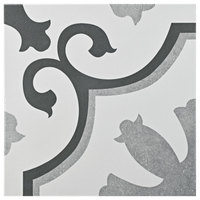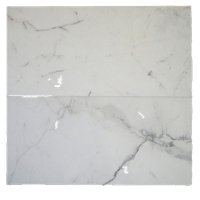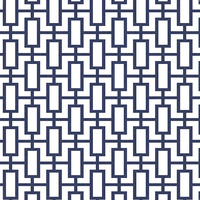The color of your grout can make or break the look of your tile. The grout color can create different effects or visually blend away. To help you choose the right grout color for your tile scheme, here are some favorite looks you might want to consider, along with some general advice for virtually every tiling scenario you might encounter.
For this reason, this pairing is perfect when you don’t want your tile to be a feature, especially in modern spaces that already have dramatic flair elsewhere.
Find a bathroom designer near you in the Houzz pro directory
See how to clean grout
Once you start to add a little contrast between your tile and your grout, the shape of the tile is revealed much more clearly, and the grout itself forms a pattern out of the negative space.
A soft gray just a few shades darker than the tile is a popular choice because it highlights a tile pattern without shouting for attention. This is especially true for tiles in which the shape, rather than a color or print, is the main feature, such as the charming fish scale shown here.
Once you start to go very dark with your grout, the grout itself and the patterns it creates start to become the visual focus over the actual tile.
Browse more bathroom inspiration
Keep in mind that when you’re dealing with black or very dark tile, the previous rules essentially are reversed.
If you like the look of grout that pops but don’t want it to be as stark as black and white, consider using a tinted grout that carries a fun hue instead of the usual gray shades. This lemon yellow grout adds a twist of color to this bathroom, but it doesn’t visually advance too much, so the room stills looks big and bright.
See how to regrout your tile
Once you move away from stark white or black, pairing vibrant-colored tile with the right shade of grout becomes a bit trickier. It is harder to tell what grout will contrast the tile or blend in. It’s important to look at the color still as having a value — darkness or lightness — that is separate from the intensity of the hue itself.
Get more kitchen ideas
Using a white or very light grout with a vivid tile may sound dramatic, but it actually helps to tame wild colors and give the space a cleaner, more timeless feel. There is a reason you so often see bright reds paired with crisp white. It’s because it helps make the color livable.
If you’re already adding colorful tile, why not add colorful grout to go with it? A pairing like this cool blue and vibrant yellow feels bold and exotic, bringing a bit of international hotel appeal without much added cost.
Besides the tile color and shade, there are other factors that can affect how the look of your grout will turn out.
Surrounding colors and materials. Here’s an example in which a colorfully tinted grout doesn’t actually feel nearly as bold as in previous examples. The rosy undertones of this grout pick up on the tones of the surrounding wood, so they actually blend in rather than pop.
Your designer or contractor can usually give you swatches of the grout just like with paint or other materials, so you can put all of your finishes and samples together in one place and see how they look together.
Find a kitchen and bathroom designer near you
Porcelain vs. Ceramic Tile: A 5-Scenario Showdown
Notice in this case how the patterning of the tile is revealed by the cabinet lights even without a bold grout.
In this example from one of my projects, the off-white grout is light enough to stand out a little bit from all of these soft greige shades and ties the traditional tile back to the contemporary white cabinets.















































 Photo via
Photo via  Photo via
Photo via  Photo via
Photo via  Photo via
Photo via  Photo via
Photo via  Photo via
Photo via 

 Passive House via
Passive House via  Passive House via
Passive House via  Passive House via
Passive House via  Cellulose insulation. Passive House via
Cellulose insulation. Passive House via  Passive House via
Passive House via  Passive House via
Passive House via 










When you look at this bathroom, your eye may first notice any number of things, but it’s likely not going to be the tile.